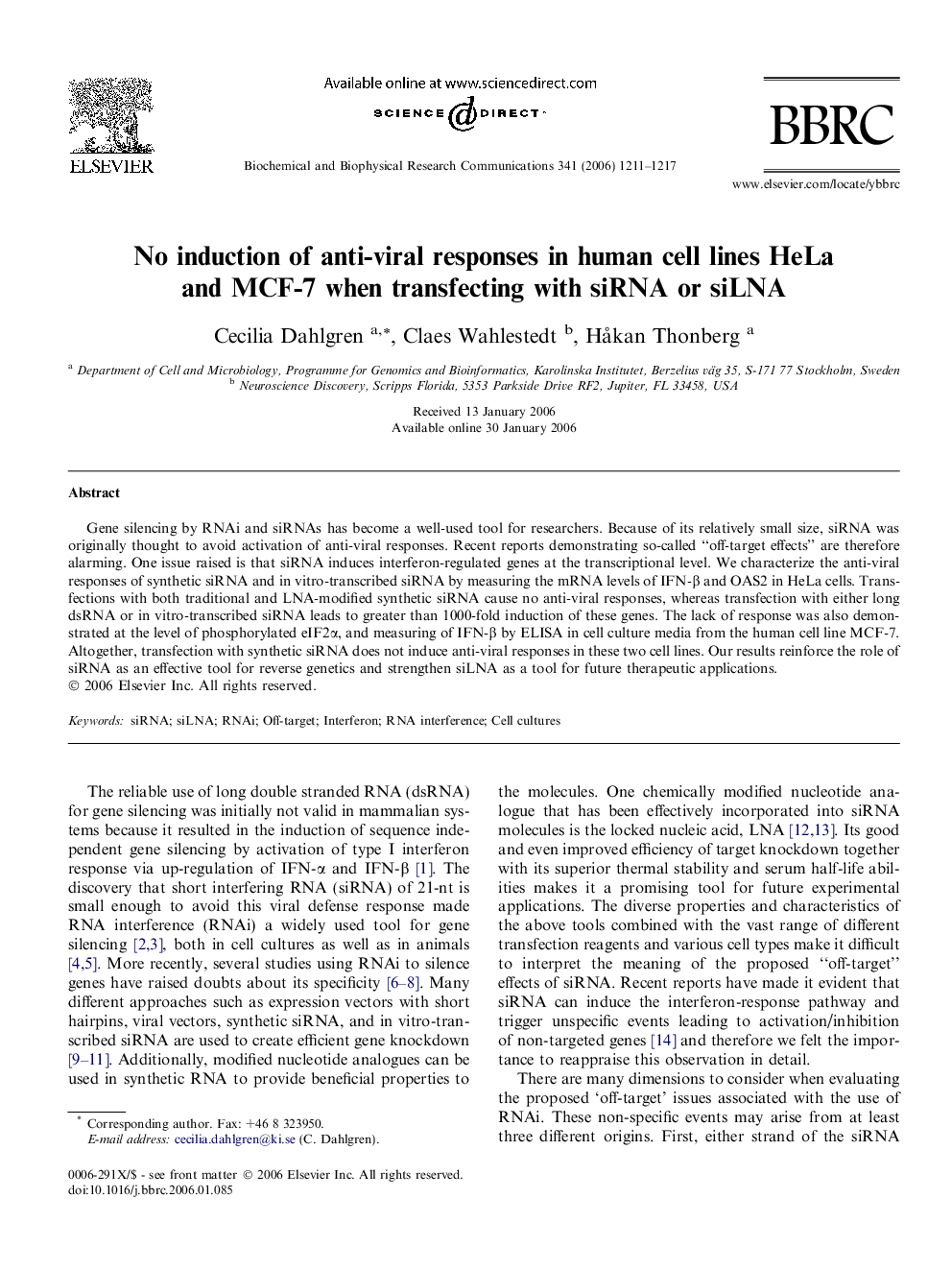| Article ID | Journal | Published Year | Pages | File Type |
|---|---|---|---|---|
| 1941262 | Biochemical and Biophysical Research Communications | 2006 | 7 Pages |
Gene silencing by RNAi and siRNAs has become a well-used tool for researchers. Because of its relatively small size, siRNA was originally thought to avoid activation of anti-viral responses. Recent reports demonstrating so-called “off-target effects” are therefore alarming. One issue raised is that siRNA induces interferon-regulated genes at the transcriptional level. We characterize the anti-viral responses of synthetic siRNA and in vitro-transcribed siRNA by measuring the mRNA levels of IFN-β and OAS2 in HeLa cells. Transfections with both traditional and LNA-modified synthetic siRNA cause no anti-viral responses, whereas transfection with either long dsRNA or in vitro-transcribed siRNA leads to greater than 1000-fold induction of these genes. The lack of response was also demonstrated at the level of phosphorylated eIF2α, and measuring of IFN-β by ELISA in cell culture media from the human cell line MCF-7. Altogether, transfection with synthetic siRNA does not induce anti-viral responses in these two cell lines. Our results reinforce the role of siRNA as an effective tool for reverse genetics and strengthen siLNA as a tool for future therapeutic applications.
